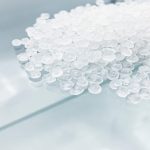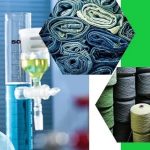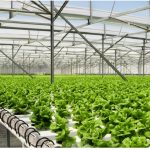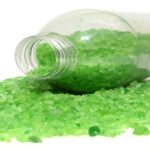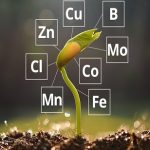The construction industry is experiencing a transformation driven by technological innovations, especially in the field of waterproofing solutions. Over the years, the demand for waterproofing chemicals has skyrocketed due to their role in ensuring the durability, safety, and longevity of buildings, infrastructure, and other construction projects. These innovative waterproofing chemicals are not only enhancing the efficiency and effectiveness of waterproofing but also addressing environmental concerns, improving sustainability, and opening up new opportunities in the sector.
Download a sample PDF 250+ Pages of Waterproofing Chemicals Market Report, published by Vantage Market Research.

The Growing Need for Advanced Waterproofing Solutions
Waterproofing has always been an essential part of construction, ensuring that buildings, roads, and other structures are protected from water damage. Inadequate waterproofing can lead to severe issues like structural damage, mold growth, and compromised building integrity. As the global construction industry continues to evolve and expand, the need for advanced waterproofing solutions has become even more pronounced.
With growing urbanization and increasing emphasis on sustainable construction, the need for chemical waterproofing solutions has intensified. The construction sector requires solutions that are not only effective but also versatile, cost-efficient, and environmentally friendly. Innovations in waterproofing chemicals are meeting these requirements, pushing the industry toward better performance and higher standards.
Innovations in Waterproofing Chemical Formulations
Recent years have seen significant advancements in the formulation of waterproofing chemicals, with an increased focus on enhancing durability, performance, and sustainability. Some of the most notable innovations include:
Polyurethane-Based Waterproofing
Polyurethane-based waterproofing chemicals are some of the most widely used solutions in modern construction. These waterproofing systems offer outstanding flexibility, adhesion, and resistance to water. They are particularly well-suited for flat roofs, terraces, and other exposed surfaces that require robust protection against water ingress.
Benefits of Polyurethane-Based Waterproofing:
- High Durability: These chemicals provide long-lasting protection against moisture and extreme weather conditions.
- Excellent Flexibility: Polyurethane coatings can stretch and adapt to the movement of the structure, making them ideal for areas prone to thermal expansion and contraction.
- Easy Application: Liquid polyurethane-based systems are easy to apply, offering seamless protection and reducing the risk of leaks.
Elastomeric Coatings
Elastomeric coatings are another significant innovation in waterproofing chemical technology. These coatings offer superior waterproofing properties while maintaining flexibility. They are ideal for protecting surfaces subject to temperature fluctuations, as they can expand and contract without cracking.
Key Advantages of Elastomeric Coatings:
- Crack Resistance: These coatings can stretch over cracks in the underlying surface, preventing water from infiltrating the structure.
- UV Resistance: Elastomeric coatings are highly resistant to UV rays, ensuring long-term protection in outdoor applications.
- Breathability: Unlike traditional waterproofing methods, elastomeric coatings allow the surface to breathe, preventing the buildup of moisture that could lead to mold growth.
Silicone-Based Waterproofing
Silicone-based waterproofing solutions are gaining popularity due to their exceptional weather resistance and low maintenance requirements. Silicone coatings provide a durable, flexible, and highly water-resistant layer that protects surfaces against harsh weather conditions, including rain, snow, and UV radiation.
Benefits of Silicone-Based Waterproofing:
- Long-Term Protection: Silicone provides excellent resistance to environmental stress, maintaining its waterproofing capabilities for an extended period.
- Non-Toxic and Eco-Friendly: Many silicone-based waterproofing products are non-toxic, offering an environmentally friendly alternative to traditional solutions.
- Low Maintenance: Once applied, silicone coatings require minimal maintenance, reducing long-term costs for building owners and contractors.
Cementitious Waterproofing
Cementitious waterproofing chemicals are another popular innovation, particularly for underground and basement applications. These products consist of a mixture of cement and waterproofing additives, which are applied directly to the surface to form a barrier that prevents water penetration.
Advantages of Cementitious Waterproofing:
- Cost-Effective: Cementitious waterproofing is one of the most cost-effective solutions for waterproofing concrete structures.
- Ease of Application: These products are easy to apply, even by non-specialized contractors.
- Permanent Protection: Cementitious waterproofing systems create a permanent, durable barrier against water ingress.
The Role of Sustainability in Waterproofing Innovations
As environmental concerns continue to grow, sustainability has become a key consideration in the development of waterproofing chemicals. The construction industry is under increasing pressure to reduce its environmental footprint and adopt more sustainable practices. Innovations in sustainable waterproofing chemicals are addressing these concerns by reducing the environmental impact of waterproofing solutions.
Bio-Based Waterproofing Chemicals
One of the most significant trends in sustainable waterproofing is the rise of bio-based chemicals derived from renewable resources. These products are gaining traction as an eco-friendly alternative to traditional petrochemical-based solutions. Bio-based waterproofing chemicals offer similar performance characteristics while reducing reliance on non-renewable resources.
Advantages of Bio-Based Waterproofing:
- Reduced Environmental Impact: Bio-based products help reduce carbon emissions and contribute to the circular economy.
- Non-Toxic: These solutions are often free from harmful chemicals, making them safer for both users and the environment.
- Renewable Resources: Bio-based chemicals are derived from renewable sources, ensuring a more sustainable supply chain for waterproofing materials.
Low-VOC Waterproofing Solutions
Volatile Organic Compounds (VOCs) are chemicals that can have harmful effects on both human health and the environment. The push for low-VOC waterproofing solutions is gaining momentum, as they help reduce indoor air pollution and minimize the environmental impact of construction projects.
Key Benefits of Low-VOC Waterproofing Solutions:
- Healthier Indoor Air Quality: Low-VOC products contribute to healthier living and working environments by reducing harmful emissions.
- Regulatory Compliance: Many countries and regions have imposed stricter regulations on VOC emissions, making low-VOC solutions essential for compliance.
- Improved Durability: Low-VOC waterproofing chemicals often perform just as well as their high-VOC counterparts, with added environmental benefits.
Nanotechnology in Waterproofing Solutions
Nanotechnology is another exciting development that is revolutionizing waterproofing chemicals. By manipulating materials at the molecular level, nanotechnology enables the creation of highly efficient and durable waterproofing products. These products have enhanced penetration properties and can provide long-lasting protection against water and other environmental factors.
Benefits of Nanotechnology in Waterproofing
- Enhanced Penetration: Nanoparticles can penetrate deeper into surfaces, providing more effective waterproofing protection.
- Self-Healing Properties: Some nanomaterials can heal minor cracks and damages automatically, ensuring continuous waterproofing performance.
- Improved Durability: Nanotechnology increases the resilience of waterproofing products, making them more resistant to wear and tear from environmental factors.
Applications of Nanotechnology in Waterproofing
- Concrete Protection: Nanotechnology is used to create nano-coatings that provide an additional layer of protection to concrete surfaces, preventing water infiltration and structural damage.
- Surface Treatments: Nanoparticles are applied as coatings to a variety of surfaces, offering superior water resistance and longevity.
Smart Waterproofing Systems
The integration of smart technologies in waterproofing solutions is an emerging trend. Smart waterproofing systems utilize sensors and monitoring devices to detect moisture levels in real time. These systems alert building owners or facility managers to potential water ingress issues before they escalate into more significant problems.
Advantages of Smart Waterproofing
- Early Detection: Real-time monitoring allows for the early detection of moisture buildup, preventing costly water damage.
- Proactive Maintenance: With data from sensors, maintenance can be scheduled proactively, extending the life of waterproofing systems.
- Energy Efficiency: Some smart waterproofing systems are designed to optimize energy use by managing moisture levels, thus contributing to energy-efficient buildings.
Access the Full Report Waterproofing Chemicals Industry Trends and Projections Now
Conclusion:
The Future of Waterproofing in the Construction Industry:- Innovations in waterproofing solutions are driving the construction industry towards greater efficiency, sustainability, and durability. The introduction of advanced waterproofing chemicals, including bio-based, polyurethane-based, and silicone-based products, is revolutionizing how buildings and infrastructure are protected from water damage. As sustainability, nanotechnology, and smart technologies continue to evolve, the future of waterproofing looks promising, with even more groundbreaking solutions on the horizon.
These innovations not only protect the structural integrity of buildings but also contribute to the longevity and safety of various construction projects, making waterproofing chemicals a cornerstone of modern construction practices. By adopting these advanced solutions, the industry is poised to meet the growing demands of urbanization and environmental sustainability in the years to come.
Examine the comprehensive Waterproofing Chemicals Market study by Vantage Market Research for a thorough examination of industry projections, major players, and geographical trends.
![[Market Research Reports] – Research Google News Blog | VMR.Biz](https://www.vmr.biz/wp-content/uploads/2022/12/logo-removebg-preview.png)
